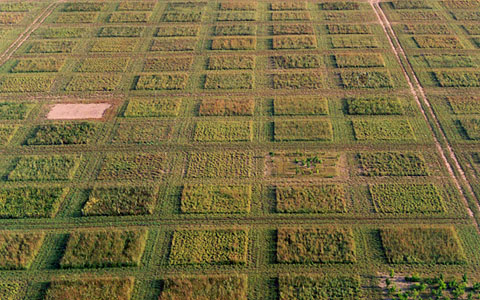Diverse grassland plants edge out crops as biofuel
by Aimee Cunningham on 9 December 2006 in Science News
Mixtures of plants native to prairies can give a better energy return as biofuel than corn and soybeans do, a new study finds. Biofuel production from grassland plants would also result in lower emissions of carbon dioxide and reduced pollution from agricultural chemicals.
Corn-grain ethanol and soybean biodiesel are starting to replace some gasoline and petrodiesel Science News: 7/15/06, page 36: www.sciencenews.org/articles/20060715/fob4.asp
However, corn and soy crops need large amounts of pesticides, water, and fertilizers.
TilmanEcologist David Tilman of the University of Minnesota in St. Paul and his colleagues determined the resources required for and energy gained from biofuels made from perennial grassland plants. These species wouldn't require regular herbicide treatments, irrigation, or fertilization and could be grown on agriculturally abandoned land. Grassland plants aren't yet used in biofuels.
In 1994, the researchers planted 152 plots of agriculturally degraded land with different numbers of perennial grassland species, such as legumes, grasses, and herbs. They monitored and sampled the plots from 1996 to 2005.
The researchers found that the most diverse plots—those with 16 different species—were also the most productive, with the potential to generate more than three times as much energy as plots that bore only one species.
The prairie-grass mixtures would give a net energy return that's more than 17 times that of corn-grain ethanol, Tilman says.
His team also calculated that with the use of an alternative chemical process now being investigated for biofuel production, fuel from grassland plants yields 51 percent more net energy per hectare than corn-grain ethanol does. The scientists report their findings in the December 8th, 2006 Science Magazine.
The production and combustion of both corn ethanol and soybean biodiesel increase carbon dioxide emissions, although less so than those of an equivalent amount of gasoline and petrodiesel. Therefore, the researchers determined how much carbon dioxide the prairie plants sequester in their roots and the soil and the amount of this gas that would be released from fossil fuel combustion during the cultivation, transport, and processing of the plants and combustion
of the biofuel.
The team found that each acre of diverse prairie plants removes from the atmosphere the amount of carbon dioxide released by burning about 190 gallons of gasoline.
In the search for new energy sources, "we should be trying to optimize all the things that society needs," says Tilman. He adds that the planting of degraded lands would prevent competition with food crops.
"The answer to sustainable energy production is going to be to use sound ecological approaches like they've spelled out here," says John Sheehan, who works on energy efficiency at the National Renewable Energy Laboratory in Golden, Colo. But with the large amount of agricultural land in the United States, "it may make very good sense to use at least a portion of that land for energy production," says Sheehan. |
